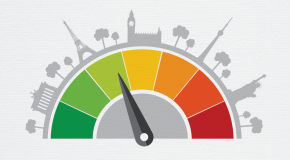The role of the power sector is to provide access to reliable, secure and affordable electricity to people whenever they need it. Due to the increasingly urgent climate crisis, the Intergovernmental Panel on Climate Change (IPCC) has called on the power sector to continue providing this service while also cutting emissions. In 2018, the IPCC announced that, in order to limit global warming to 1.5°C, global net human-caused emissions of CO2 would need to fall by about 45% from 2010 levels by 2030, and reach “net zero” by around 2050. In practice, this means that all sectors must shift away from fossil fuels to reduce emissions, while removing CO2 from the atmosphere to offset any remaining emissions.
Rising demand for electricity is driven by various uses including space cooling which – particularly at certain times of the day – threatens the power sector’s ability to deliver secure, affordable and net zero power. This report is based on an extensive modelling exercise that identifies the financial and environmental costs of energy supply if electricity demand from space cooling is not reduced. It quantifies how these costs would be reduced if space cooling were made more efficient, and explores other solutions that the power sector could consider, including demand response programmes and thermal energy storage.
Finally, the report highlights why it is in the interest of the power sector, policymakers and consumers to pay attention to cooling efficiency, and outlines priority actions that need to be taken to ensure that the contribution of efficient cooling to speeding up and reducing the cost of the race to net zero can be realised.
Key findings
- Electricity demand for cooling is expected to grow almost twofold at an average annual rate of 6.1% to 2030. Expanding capacity to meet this demand will cost US$4.6trn over the next ten years and contribute 10.1 GtCO2 emissions.
- Of the $4.6trn, more than half (54%) of the costs are from generating and operating power plants to meet demand at peak hours.
- Even if stakeholders embrace a shift to renewables, the financial and environmental costs – $4.5trn and 9.2 GtCO2 – will still be high.
- Focusing on more efficient cooling can substantially reduce these costs:
- Installing more efficient air conditioning equipment could save $0.9trn and 2.0 GtCO2 by 2030.
- Reducing the need for air conditioning units could increase those savings to $3.5trn and 7.6 GtCO2 over the same time period.
- Without the implementation of sustainable cooling solutions, countries aiming to meet net zero emissions in 2050 are likely to miss those targets by up to eight years.
- Efficient cooling can expedite the transition to net zero at a lower cost, as well as providing benefits for all stakeholders, including governments, consumers and the power sector itself, given the right incentives.





